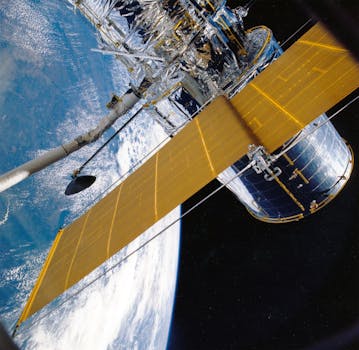GEO Satellites: Understanding the Technology and Applications of Geostationary Orbit Satellites

GEO Satellites: Introduction to Geostationary Orbit Satellites
GEO satellites, or geostationary orbit satellites, are a type of satellite that orbits the Earth at an altitude of approximately 36,000 kilometers, remaining stationary relative to a fixed point on the Earth’s surface. This unique characteristic allows GEO satellites to provide continuous coverage of a specific region, making them ideal for a variety of applications, including telecommunications, navigation, and weather forecasting. The focus keyword GEO satellites is crucial in understanding the technology and applications of geostationary orbit satellites.
History and Development of GEO Satellites
The concept of GEO satellites was first proposed by Arthur C. Clarke in 1945, and the first geostationary satellite, Syncom 2, was launched by NASA in 1963. Since then, the technology has evolved significantly, with advancements in materials, propulsion systems, and instrumentation. Today, there are hundreds of GEO satellites in orbit, providing a wide range of services, including television broadcasting, telecommunications, navigation, and weather forecasting.
Applications of GEO Satellites
GEO satellites have a wide range of applications, including telecommunications, navigation, and weather forecasting. In telecommunications, GEO satellites are used to provide internet connectivity, telephone services, and television broadcasting to remote and underserved areas. In navigation, GEO satellites are used to provide location information and timing signals, which are essential for GPS and other navigation systems. In weather forecasting, GEO satellites are used to monitor weather patterns, track storms, and predict weather conditions.
Benefits and Future Developments of GEO Satellites
The benefits of GEO satellites are numerous, including providing continuous coverage of a specific region, offering high-gain antennas, and enabling the use of small, low-cost user terminals. However, there are also challenges associated with GEO satellites, such as the risk of collisions with other satellites and the accumulation of space debris. Future developments in GEO satellite technology are expected to focus on improving the efficiency and sustainability of these satellites, including the use of more efficient propulsion systems and the development of new instrumentation and sensors.
Conclusion
In conclusion, GEO satellites play a vital role in modern telecommunications, navigation, and weather forecasting. Their unique characteristic of remaining stationary relative to a fixed point on the Earth’s surface makes them ideal for providing continuous coverage of a specific region. As the technology continues to evolve, we can expect to see new and innovative applications of GEO satellites, including the use of advanced propulsion systems, new instrumentation, and more efficient designs.